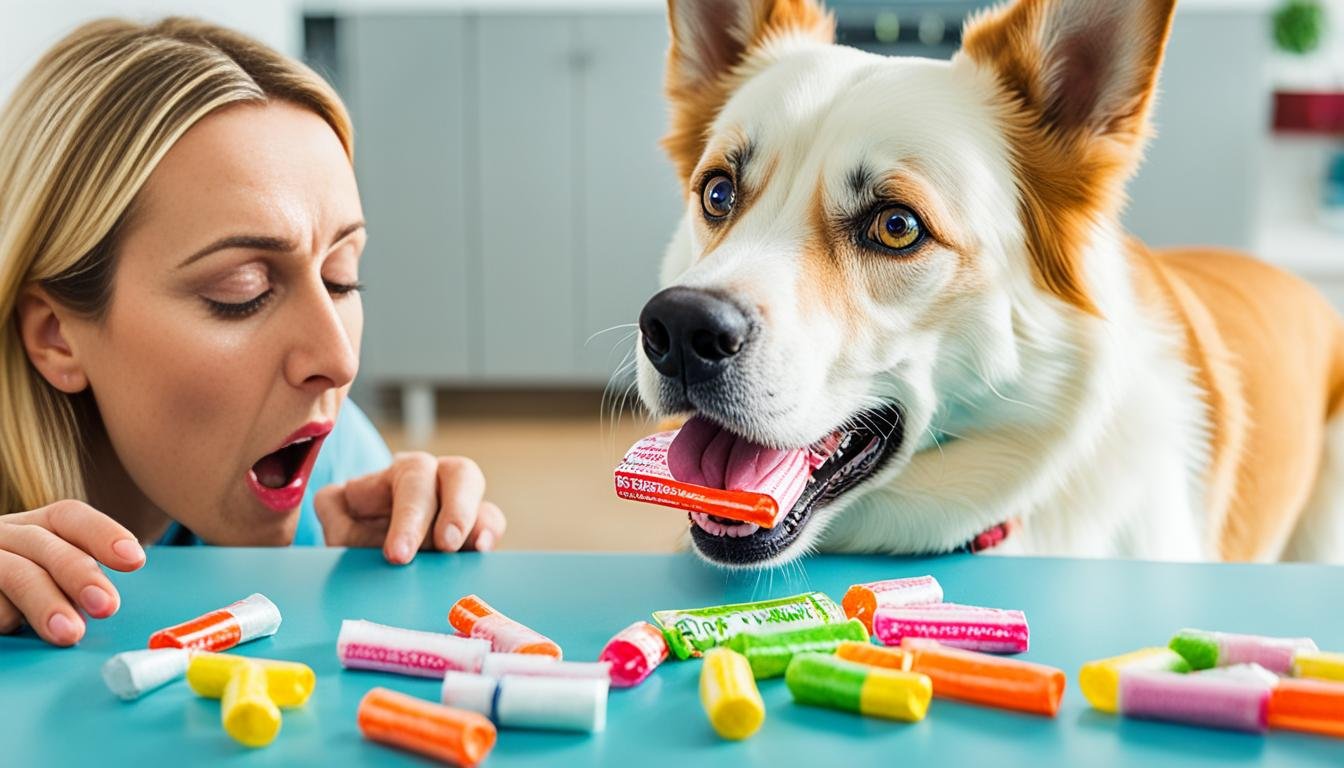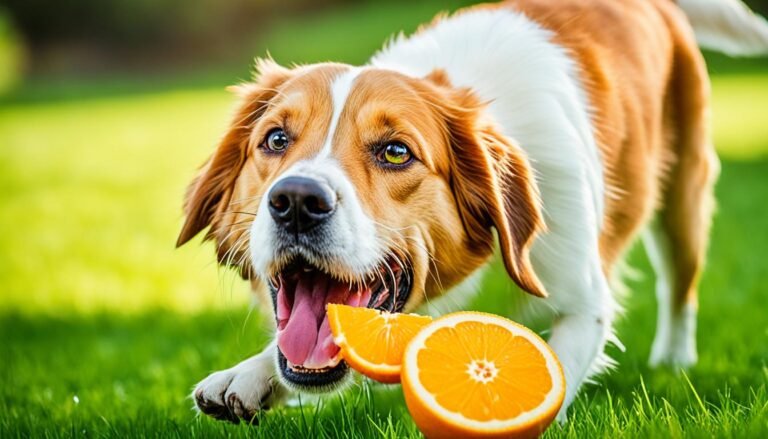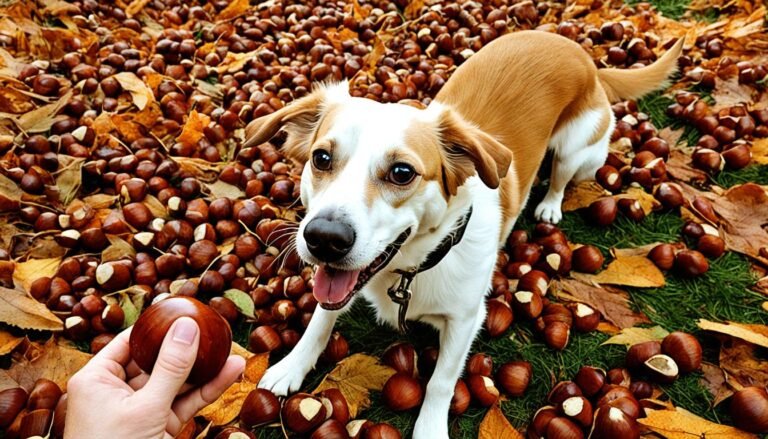Can Dogs Eat Chewing Gum? A Guide for Pet Owners
Did you know that calls about xylitol pet poisonings increased by 108% between 2015 and 2020? In 2020, the Pet Poison Helpline got a lot of calls about xylitol. This was second only to calls about chocolate poisoning. This shows how important it is for dog owners to know the risks of chewing gum for dogs.
Imagine you’re walking your dog, and suddenly they find and start eating gum. It’s like a teenager chewing away. This is a big issue. Most know chocolate is bad for dogs. But not everyone knows that sugar-free gum is dangerous too. This gum has xylitol, a sweetener that’s in many foods that are sugar-free. You can find xylitol in gum, candy, peanut butter, and more.
Key Takeaways
- Calls about xylitol pet poisonings increased by 108% between 2015 and 2020.
- Sugar-free gum, which contains xylitol, can be extremely dangerous for dogs.
- Xylitol is a low-calorie sugar substitute found in many products, including gum, candy, and peanut butter.
- It’s crucial for pet owners to be aware of the risks and take steps to prevent their dogs from accessing xylitol-containing products.
- Prompt veterinary attention is essential if a dog does ingest gum or other xylitol-containing items.
Understanding the Dangers of Xylitol in Chewing Gum for Dogs
Xylitol is a sugar substitute. It’s in gum, mints, and some personal care stuff. For us, it’s a good thing. For dogs, it can be very bad. As pet owners, we must know the dangers of xylitol poisoning in dogs. We should keep it away from our pets.
What Is Xylitol?
Xylitol is a kind of sugar alcohol. It’s used in things that need to be sugar-free. You can find it in chewable vitamins, dental products, nasal sprays, sunscreen, deodorant, makeup, and even baby wipes. It’s chosen for these products because it feels cool and keeps them moist.
The Dangers of Xylitol
Xylitol can make a dog’s blood sugar levels suddenly drop. This is called hypoglycemia. It brings serious issues like vomiting, weakness, and seizures. Sometimes, it can even put a dog in a coma. Some dogs also get serious liver damage from eating xylitol.
A little xylitol is all it takes for dogs to get sick. About 0.05 grams per pound of body weight is dangerous. Chewing gum and breath mints have 0.22-1.0 grams of xylitol in each piece. So, a small dog can be severely affected by just one piece of gum.
Symptoms of Xylitol Poisoning in Dogs
If a dog eats something with xylitol, these signs may show up fast:
- Vomiting
- Weakness
- Depression
- Hypokalemia (extremely low potassium levels)
- Seizures
- Coma
Only dogs can’t digest xylitol. This makes it very risky for dog owners to watch out for.
can dogs eat chewing gum
Watch for these signs in your dog if they eat gum: stumbling, weakness, or seizures. If your dog shows these signs after eating gum, take them to the vet. These symptoms mean it’s an emergency.
Signs of Xylitol Toxicity in Dogs
It’s a good idea to call your vet even if your dog doesn’t seem ill. Gum without xylitol can still upset their stomach. There might be other problems like an intestinal blockage to watch for.
When It Is an Emergency
If your dog shows signs like weakness or vomiting after eating gum, go to the vet. These are emergency symptoms and should be taken seriously.
Sugar-Free Gum Without Xylitol
Gum without xylitol can still make your dog sick. They might have an upset stomach. Watch them carefully for any unusual signs or symptoms.

Responding to Xylitol Ingestion in Dogs
Has your dog eaten gum? Watch them closely for a day. The first half an hour to an hour is crucial. Quick vet care then could save your dog from serious harm.
What to Watch for in the First 30 Minutes to 1 Hour
It takes 10-24 hours for things to leave a dog’s stomach. The body can’t break gum down, so it moves through. Eating a lot might block the dog’s intestines. This could happen if the dog eats the wrapper. Signs of a blockage may take days to show.
Treatment for Xylitol Poisoning
Think your dog ate xylitol? Call your vet or the helpline right away. Don’t make your dog vomit or offer water. Wait for vet advice. Early help can prevent serious problems or save your dog’s life.
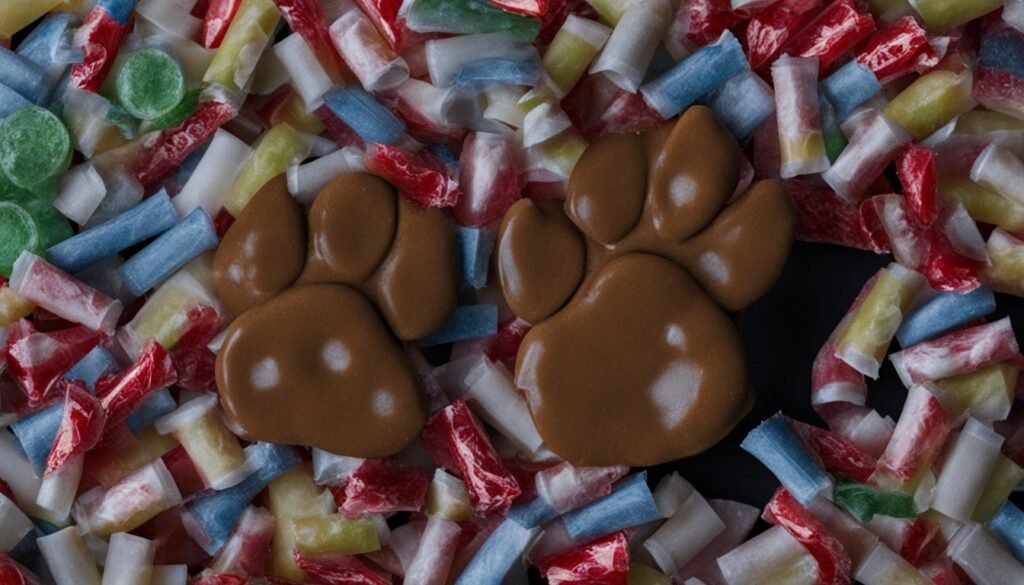
Preventing Xylitol Poisoning in Dogs
Dogs love sweet things and can be quite the scavengers. It’s critical to make your home safe. Be sure to keep harmful sweets, like xylitol gum and candy, out of reach. Watch out for gum they find in purses, the car, or on the ground. Only give them peanut butter that’s safe for dogs.
Sugar-free gum usually has xylitol in it. It’s hard to know which other products have it. Avoid anything “sugar-free” or “no sugar added.” Use dog toothpaste for brushing, not people’s. And don’t share your food with them, especially if it might have xylitol.
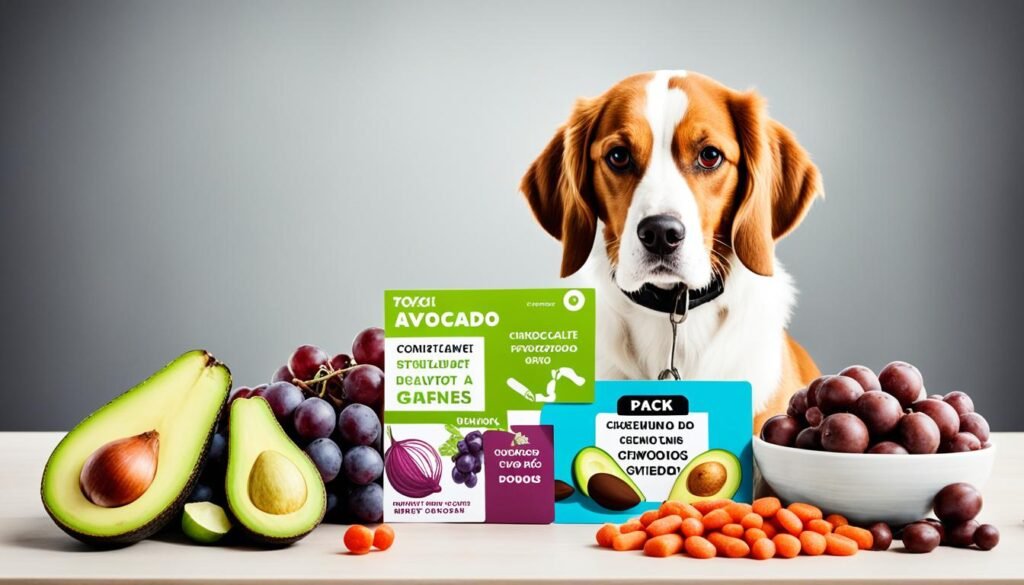
Conclusion
Chewing gum is very risky for dogs, especially kinds with xylitol but sugar-free. Xylitol can make a dog’s blood sugar drop a lot, which is dangerous. It can also harm their liver. Pet owners in the United Kingdom should know this. They must stop their dogs from eating or getting this sweet substance. This keeps their pets safe.
If a dog does eat gum with xylitol or similar, getting help fast is key. Knowing the risks and being ready is important for dog health. Pet owners must learn about what’s bad for dogs. This includes dangers like chewable gum, dangers of xylitol, and alternative options. This will protect their dogs.
To all dog owners in the UK, be careful with xylitol. Keep gum and such items far from your dogs. This ensures they stay happy and healthy with us for a long time.
